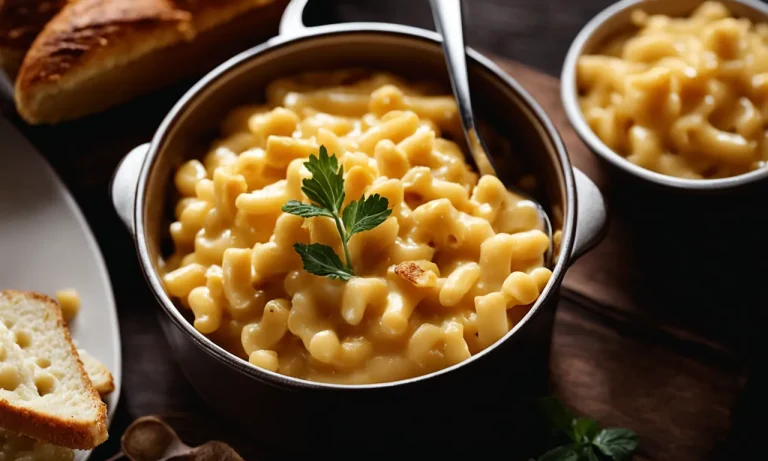Is Yellow Tail Wine Vegan? Examining The Ingredients And Process
With its affordable price point and wide availability, Yellow Tail has become one of the most popular wine brands around the world. But is Yellow Tail vegan? Many wine drinkers want to know if animal products are used during the winemaking process before picking up a bottle.
In this comprehensive guide, we’ll take an in-depth look at how Yellow Tail wine is made and if it aligns with vegan principles.
If you’re short on time, here’s the quick answer: Yes, Yellow Tail wine is generally considered vegan-friendly. Yellow Tail does not use animal-derived fining or filtering agents in their winemaking process, making their wines a good option for those following a vegan diet.
About Yellow Tail Wine
Yellow Tail is a popular Australian wine brand that has gained global recognition for its affordable and approachable wines. The brand was established in 2001 by the Casella family, who had a vision to create high-quality wines that are accessible to everyone.
Since its inception, Yellow Tail has become one of the most recognizable wine labels in the world.
Company History
The Casella family, with a rich history in winemaking, set out to create a wine brand that would challenge the traditional perceptions of wine and make it more approachable to a wider audience. They wanted to break away from the conventional image of wine as a highbrow and exclusive beverage.
With this vision in mind, they launched Yellow Tail, focusing on producing wines that are easy to drink, with bold and fruit-forward flavors.
The brand’s success can be attributed to its clever marketing strategies, as well as its commitment to producing consistent and reliable wines. Yellow Tail quickly gained popularity in the United States, where it became the best-selling imported wine brand.
Today, Yellow Tail is available in over 50 countries and continues to be a favorite choice for wine enthusiasts of all levels of expertise.
Wine Varieties
Yellow Tail offers a wide range of wine varieties, catering to different tastes and preferences. Their portfolio includes popular varietals such as Chardonnay, Sauvignon Blanc, Shiraz, Merlot, Cabernet Sauvignon, and Pinot Noir.
Each wine is crafted to showcase the unique characteristics of the grape variety and the terroir in which it is grown.
One of the hallmarks of Yellow Tail wines is their fruit-forward profile, which makes them approachable and enjoyable for both novice and experienced wine drinkers. The wines are known for their vibrant flavors, balanced acidity, and smooth finish.
Whether you prefer a crisp and refreshing white wine or a bold and robust red, Yellow Tail offers something for everyone.
Where It’s Produced
Yellow Tail wines are produced in the Riverina region of New South Wales, Australia. The Casella family’s winery, located in the town of Yenda, is where the magic happens. The region’s warm climate and fertile soils provide the ideal conditions for growing grapes that result in wines with rich flavors and exceptional quality.
The winemaking process at Yellow Tail combines traditional techniques with modern technology to ensure consistency and excellence in every bottle. From vineyard management to fermentation and aging, every step is carefully monitored to maintain the brand’s high standards.
If you’re interested in learning more about Yellow Tail wines, you can visit their official website at www.yellowtailwine.com. There, you can explore their range of wines, read about their winemaking philosophy, and find delicious food pairing suggestions to enhance your wine-drinking experience.
Ingredients in Yellow Tail Wine
Grapes
The primary ingredient in Yellow Tail wine is grapes. Yellow Tail sources their grapes from various vineyards around Australia, including the Riverina region in New South Wales. The grapes used in the production of Yellow Tail wines are carefully selected to ensure the highest quality and flavor.
The specific grape varieties may vary depending on the type of wine, but common varieties include Shiraz, Cabernet Sauvignon, Chardonnay, and Pinot Noir.
Yeast
Yeast is an essential ingredient in the winemaking process as it converts the sugars in the grapes into alcohol. Yellow Tail uses natural yeast strains during fermentation to achieve the desired flavors and aromas in their wines.
The yeast plays a crucial role in determining the characteristics of the final product, such as its body, acidity, and complexity.
Sulfites
Sulfites are a common additive in wines, including Yellow Tail. They act as a preservative to prevent spoilage and maintain the wine’s freshness. Sulfites are naturally produced during the fermentation process, but additional sulfites may be added to ensure stability and longevity.
It’s important to note that sulfites are generally safe for consumption, but some individuals may be sensitive or allergic to them.
According to the Yellow Tail website, their wines contain sulfites, as required by law. The exact amount of sulfites can vary depending on the specific wine, but it is typically within the acceptable range for wine consumption.
It is always a good idea to check the label or contact the winery directly if you have any concerns or specific dietary requirements.
For more information about the ingredients and process used in Yellow Tail wine production, you can visit their official website at https://www.yellowtailwine.com/.
The Winemaking Process
When it comes to wine production, the winemaking process is a crucial aspect that determines the final taste, aroma, and quality of the wine. Let’s take a closer look at the various stages involved in the creation of Yellow Tail Wine.
Crushing and Pressing Grapes
The winemaking process begins with the careful selection and harvesting of grapes. Once the grapes are collected, they undergo a thorough cleaning process to remove any impurities. The next step is crushing, where the grapes are gently pressed to extract the juice.
This juice will later be fermented to create the wine.
Fermentation
During fermentation, the grape juice is exposed to yeast, which converts the sugar present in the juice into alcohol. This process takes place in temperature-controlled stainless steel tanks, allowing the yeast to work its magic and create the desired flavors and aromas.
The fermentation process can take anywhere from a few days to several weeks, depending on the type of wine being produced.
Fining and Filtration
Once fermentation is complete, the wine goes through a process called fining. Fining involves the addition of various substances, such as bentonite or activated charcoal, to clarify the wine and remove any unwanted particles. This step helps improve the wine’s appearance and stability.
After fining, the wine is filtered to remove any remaining impurities, ensuring a clean and clear final product.
Aging and Bottling
After fining and filtration, the wine is ready for aging. Aging is an essential step in the winemaking process, as it allows the flavors and aromas to develop and mature over time. Yellow Tail Wine is known for its vibrant and fruity characteristics, which are enhanced during this aging process.
Once the wine has reached its optimal maturity, it is carefully bottled, sealed, and prepared for distribution.
It’s important to note that Yellow Tail Wine follows strict quality control measures throughout the winemaking process to ensure the highest standards of taste and quality. The winemakers at Yellow Tail are dedicated to creating vegan-friendly wines that can be enjoyed by all wine enthusiasts.
Are Animal Products Used?
When it comes to determining whether Yellow Tail Wine is vegan, it’s important to consider the ingredients and the production process. Let’s take a closer look at how Yellow Tail ensures its wines are vegan-friendly.
No Milk or Egg-Derived Fining Agents
Yellow Tail Wine does not use any milk or egg-derived fining agents in the production process. Fining agents are substances that are used to clarify and stabilize the wine by removing unwanted particles. Some common fining agents include egg whites, gelatin, and isinglass (derived from fish bladder).
However, Yellow Tail uses alternative fining agents that are plant-based, ensuring their wines are suitable for vegans.
Vegan-Friendly Filtration
Yellow Tail also employs a vegan-friendly filtration process. Filtration is an essential step in winemaking to remove any remaining impurities and sediment. While some wineries may use animal-derived products such as bone char or casein for filtration, Yellow Tail uses a combination of mechanical and plant-based filtration methods, making their wines suitable for vegans.
Minimal Intervention Approach
One of the reasons why Yellow Tail Wine is considered vegan-friendly is its minimal intervention approach to winemaking. This means that the winemakers aim to let the natural flavors and characteristics of the grapes shine through without the need for excessive additives or processing.
By minimizing the use of animal-derived products and focusing on a more natural approach, Yellow Tail ensures that their wines are suitable for vegans.
For more information about Yellow Tail Wine’s vegan-friendly practices, you can visit their official website here.
Certifications and Labeling
When it comes to determining if Yellow Tail Wine is vegan, certifications and labeling play a crucial role. There are various certifications and labels that can provide clarity for vegan consumers.
Vegan Certification
One important certification to look for is the Vegan Certification. This certification ensures that the product does not contain any animal-derived ingredients or by-products. However, it’s important to note that not all vegan products carry this certification, so it’s essential to carefully examine the ingredients and process.
Ingredient Labeling
Another way to determine if Yellow Tail Wine is vegan is by carefully reading the ingredient label. While wine itself is typically vegan, some winemaking processes involve the use of animal-derived fining agents, such as gelatin or fish bladders, to clarify the wine.
These fining agents can be used during the filtration process to remove any impurities or sediment from the wine.
Yellow Tail Wine provides ingredient information on its labels, which can help vegan consumers make an informed decision. By checking the label for any animal-derived ingredients, such as gelatin or egg whites, consumers can determine if the wine is vegan-friendly.
Online Resources
Additionally, there are several online resources available that provide information on vegan wines and their certifications. Websites such as Barnivore and Vegan Wines offer comprehensive databases of vegan-friendly wines, including Yellow Tail Wine.
These resources can be a valuable tool for vegans looking for wines that align with their dietary choices.
Communication with the Manufacturer
For further clarification, consumers can also reach out to Yellow Tail Wine directly to inquire about their winemaking process and any certifications they may have. Many companies are transparent about their practices and are happy to provide information to their customers.
Conclusion
In summary, Yellow Tail wine does not use animal-derived products like milk, eggs, or fish bladder as fining or filtering agents during production. The brand’s approach of minimally intervening in the winemaking process makes their wines a good choice for vegans and vegetarians looking for an affordable, widely available option.
While not officially certified, Yellow Tail aligns with vegan principles and is considered a vegan-friendly brand.







